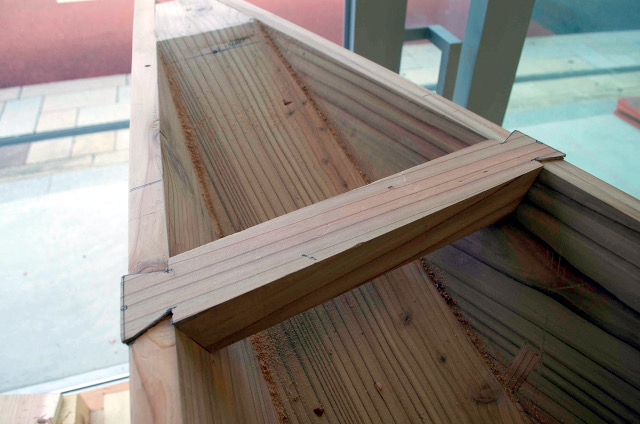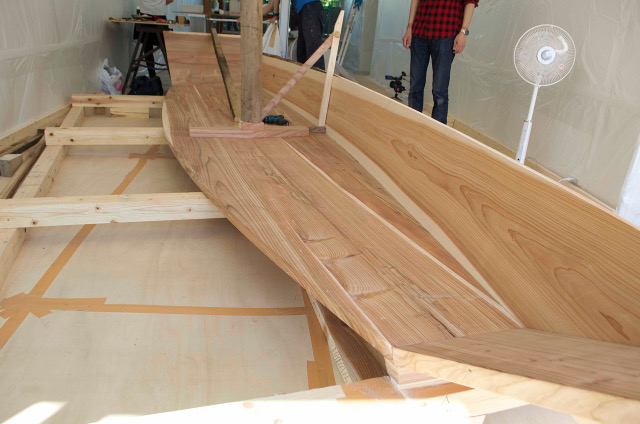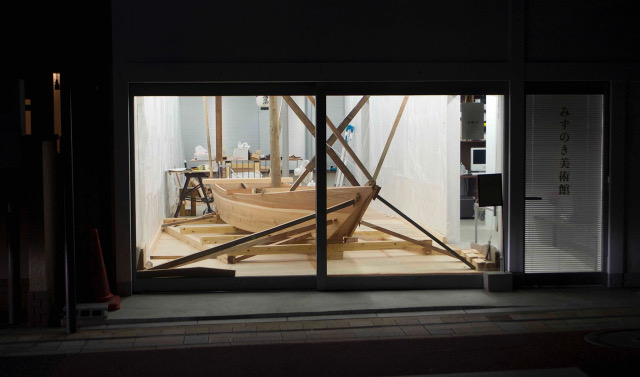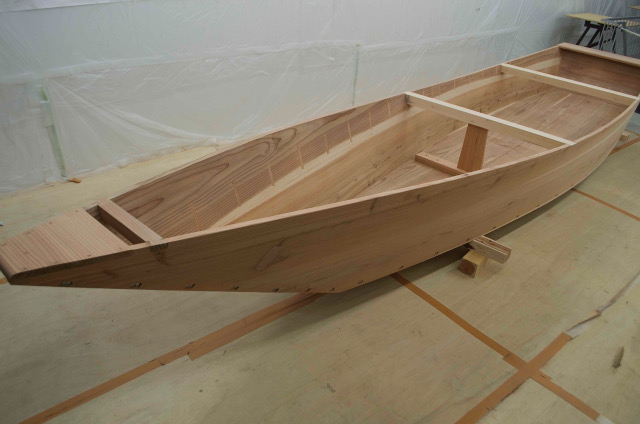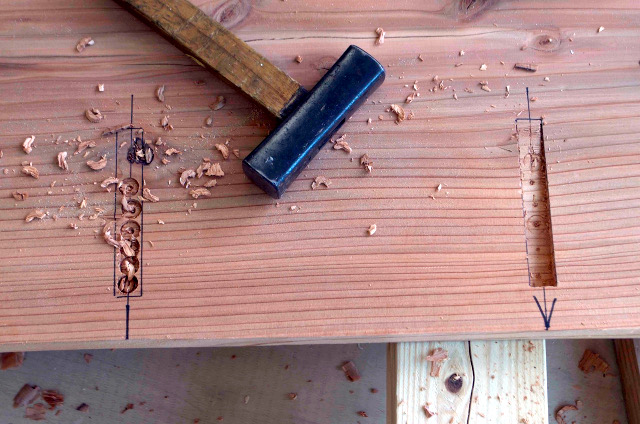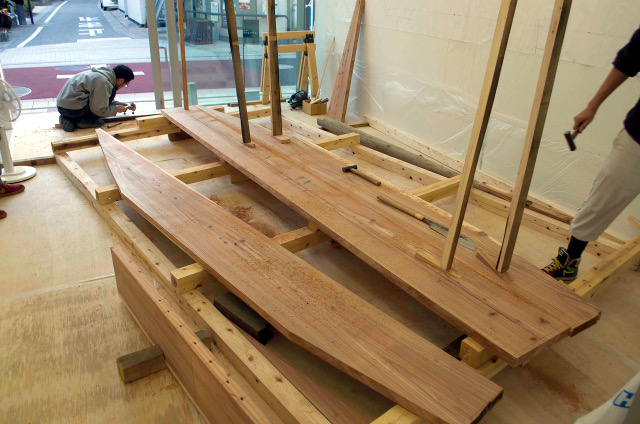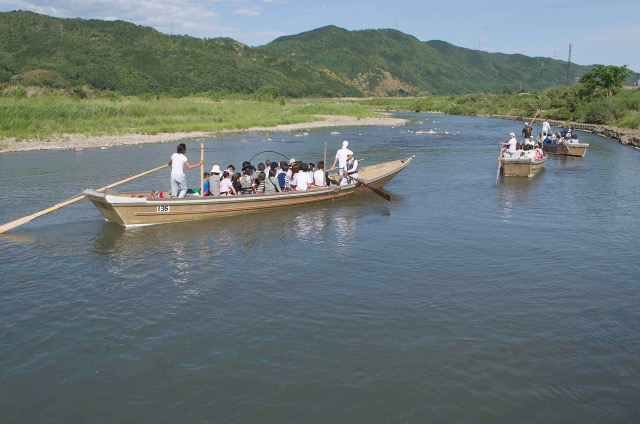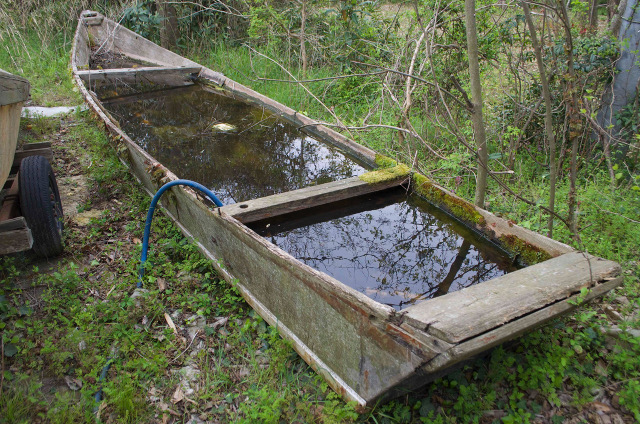Ayubune
Ayubune pages on this site
Meijer Garden Ayubune : Middlebury College Winter Term 2015 : Middlebury College Winter Term 2018

(Boat photograph courtesy of Mr. Omote Nobutada)
The two terms most commonly found in Japan for small boats are Tenmasen, and ayubune. The former is a generic term for many types of small working boats, often a ship’s boat, while the latter refers to river craft, specifically those fishing boats used to catch ayu, a sweetfish popular throughout Japan and found in most of Japans’s rivers.
Given the varieties of Japan’s rivers, naturally ayubune take many forms, reflecting the type of fishing in a particular region as well as the local boatbuilding technology. In 2014 I built an ayubune indigenous to the Hozu River, which flows from the mountains southeast through Kyoto. I built the boat at the Mizunoki Museum in Kameoka, a city of 90,000 just over the mountains to the northwest of Kyoto. Kameoka sits in a high fertile valley, the last open land before the Hozugawa cuts through the mountains, tumbling as a white water river until it reaches Kyoto.
One of Kameoka’s most well-known businesses is the Hozugawa-kudari, a downriver tour boat company offering very exciting rides down the river (http://www.hozugawakudari.jp/en). The kudari boats look like enlarged versions of the ayubune: flat bottoms with wide, pram-like bows. These bows give the forward end of the boats buoyancy as they plunge into the currents. The boats feature a simple interior framework of horizontal beams bracing the hull, and small decks fore and aft. Like most Japanese boats, planks are edge-nailed together with flat steel nails.
For well over a hundred years the company has taken passengers downstream. Today the trip ends in Arashiyama and the boats are brought back upstream by truck, but in the old days the boatmen actually pulled the boats back upstream. The company has historic footage of this work, and as you head downstream today the boatmen will point to deep grooves cut in the rocks by their predecessors towlines.
After speaking at a conference in Kameoka a few years ago I began discussing a boatbuilding project with the Mizunoki Museum’s director. She wanted to see a boat built as a public demonstration and I felt the type of boat should be one with meaning to the local community. At first I was told there were no surviving historic ayubune, then a large (eight meter) derelict boat was found. The Hozugawa-kudari also had an old fiberglass mould made from a six meter boat and I decided to use those lines and refer to the construction details of the larger boat.
I had six students in the project. All were volunteers at the Mizunoki Center, a facility for the mentally and physically handicapped that is a sister organization to the museum. Over the course of three weeks during the Spring of 2014 we built an ayubune, hosted a workshop on boatbuilding and preservation, and measured two historic boats: the eight meter ayubune as well as a five meter boat I found after starting the project. I also interviewed the son of Kameoka’s last builder of wooden boats. He had apprenticed with his father and later went on to build fiberglass tour boats for the Hozugawa-kudari.
In talking to the boatbuilder, along with the owner of the five meter boat, I learned that ayubune were used for both fishing but also during the annual spring flooding of the river. People fished seasonally for ayu, and most of these fishermen were rice farmers. The boats were essential for transportation in the area when the floodwaters prevented other forms of transit. I also learned that some of our construction details were incorrect. Our boat’s bottom was made of three wide boards, but ayubune were built with noticeably narrow bottom planking. The reason? To make it easier to repair and replace boards damaged from running down a white water river. The two historic boats we found had been fiberglassed and this hid some other, more minor, construction details. See my blog postings, beginning here (http://blog.douglasbrooksboatbuilding.com/2014/04/ayubune-project.html) for a more detailed description of the project.
About the museum: http://www.nippon-foundation.or.jp/en/what/spotlight/artbrut/story5/index.html

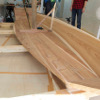
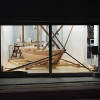

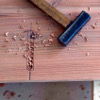
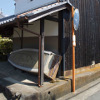
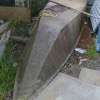
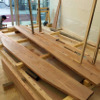
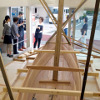

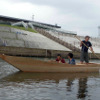

© Copyright Douglas Brooks, 2007 - 2018. All rights reserved

